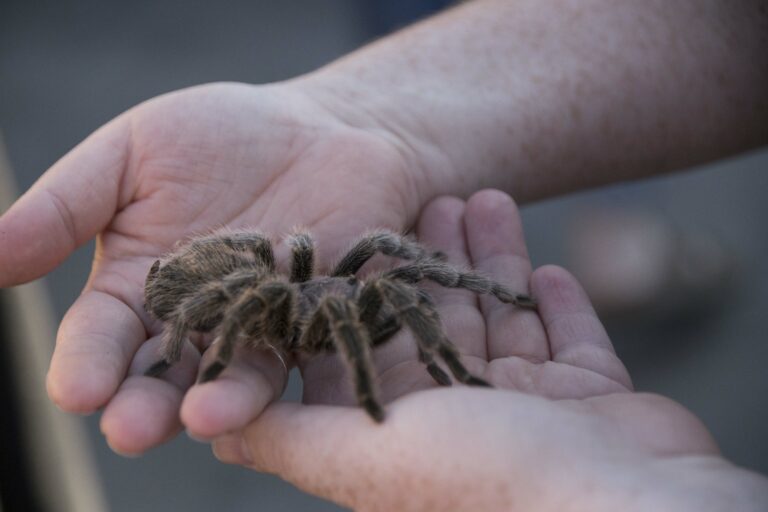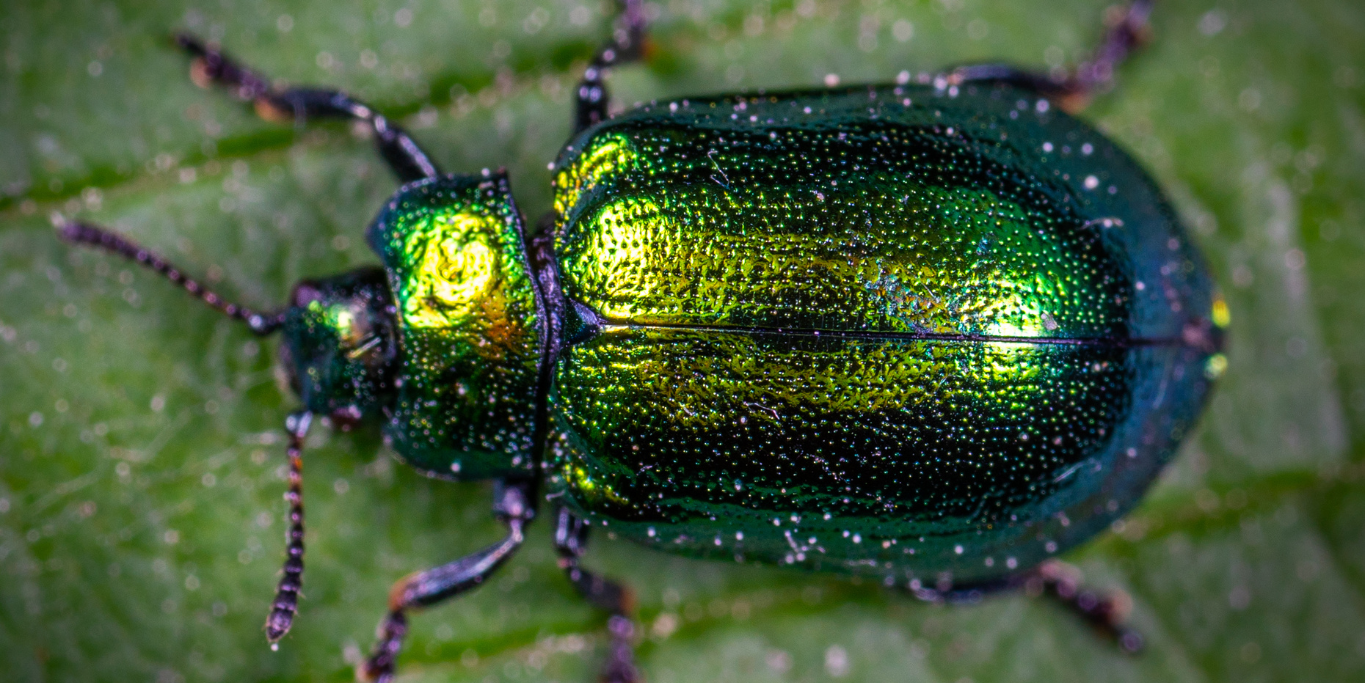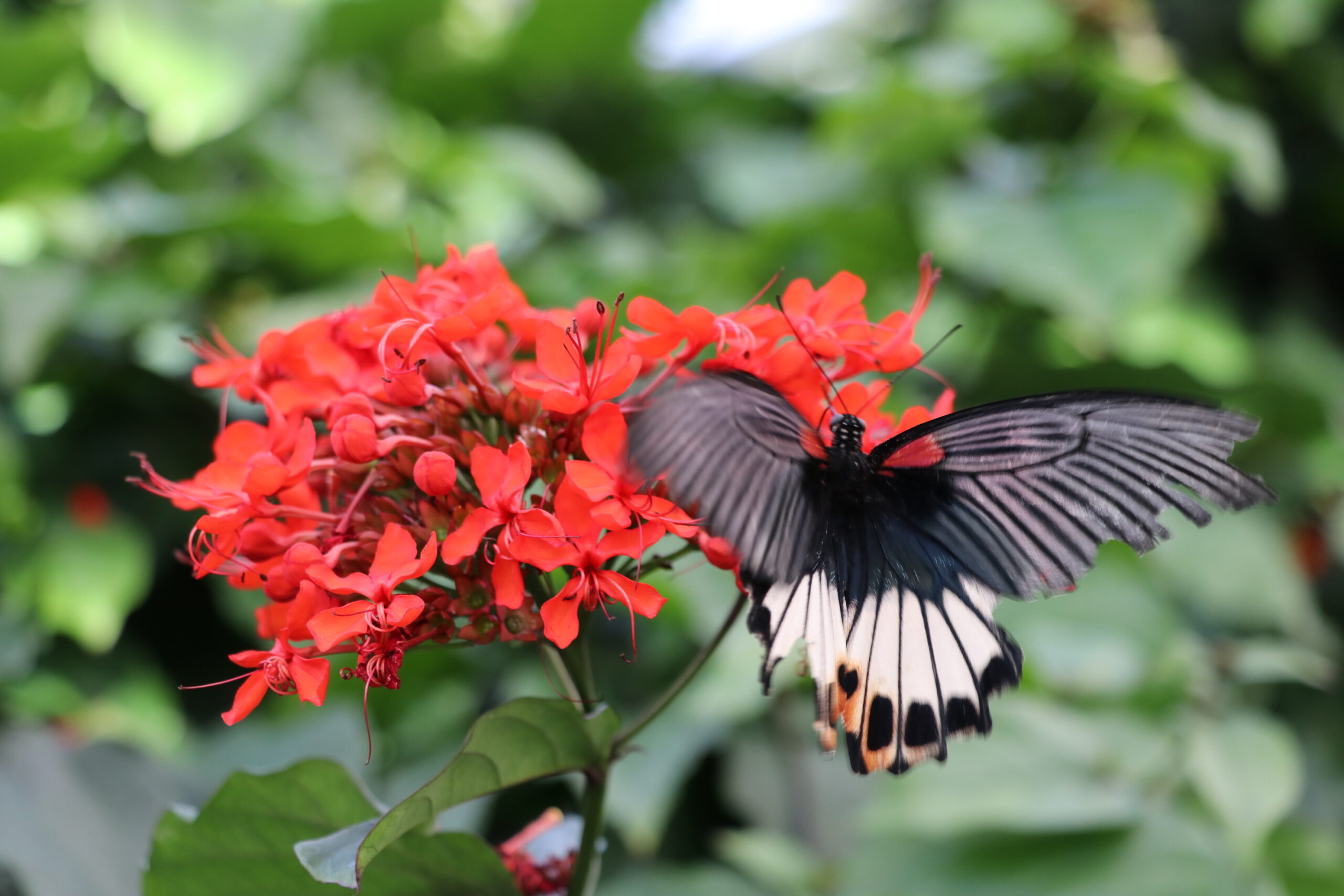We’ve all seen the classic movie scene where someone brings in a pet tarantula and it somehow gets loose and winds up on someone’s head, causing hysteria. There is a fear associated with tarantulas, all spiders really, that is generally unwarranted. What are we afraid of? That they will bite us, and their spider venom will cause our demise?
Honestly, it’s an irrational fear. Tarantula venom has never been known to kill anyone – so unless you’re an invertebrate or a mouse, you’re probably in the clear. It’s been said that the more you know, the less you fear, so let’s learn a little more about tarantulas and their venom. Our Chief Entomologist, Marissa Harrison, talks about tarantulas and the impact a tarantula bite really has on humans.
Tarantulas are millions and millions of years old and there are over a thousand species. Old World tarantulas are tarantulas that are native to Africa, Asia, Europe, and Australia. New World tarantulas are tarantulas that are native to North and South America.
Tarantulas have systems of mouthparts that house their venom glands and fangs called “chelicerae.” The fangs are hollow and fill with venom. Tarantulas inject this venom into the prey they bite. This venom paralyzes their food and predigests it (liquefies the insect meal using secreted digestive enzymes). Tarantulas have straw-like mouths and are unable to chew, so they need their venom to smoothie-ify their food in order to eat it. This whole eating process can take a few hours. If a human gets bitten by a tarantula, they might get a bit sick or hurt for a few hours to a few days depending on the strength of the venom and the person’s health and immune system.
But it is unlikely you will get bitten by a tarantula. Making venom expends a lot of energy for a tarantula, so they don’t want to use it unless they really have to. They would much rather use it to eat their food. Marissa says, “Any tarantula will want to run the opposite way or stand with his first two legs and pedipalps (second pair of appendages near the head) fully extended in the air. They will do everything they can to not bite you.”
New World tarantulas have urticating hairs on their abdomens that act as a defense against their predators. Because they have this extra defense, they are slower to bite, and their venom is more mild than the Old World tarantulas.
Old World tarantulas do not have these hairs, and thus do not have this extra line of defense and are quicker to inject their venom. This venom is a bit more potent (but still won’t hurt much more than a wasp sting).
Tarantulas can also dry bite if they choose, which does not expense venom. If a human is dry bitten, they will just be left with a small puncture wound.
If you do get bitten by a tarantula, you will want to wash the area with soap and water. Any hairs stuck to the skin should be removed with tweezers or duct tape. After it has been thoroughly cleaned, place wrapped ice on the bite site for 10 minutes and then remove it for 10 minutes and repeat the process. You can apply a topical cortisone or Benadryl cream to reduce irritation and take an anti-inflammatory medication, like aspirin or ibuprofen, for pain or swelling. Monitor the bite for signs of infection or allergic reaction.
You can get an up-close look at a tarantula in the Butterfly Biosphere – including the Giant Bird Eating Tarantula and the Gooty Sapphire Tarantula. See if you can tell if they are an Old World or New World tarantula!




